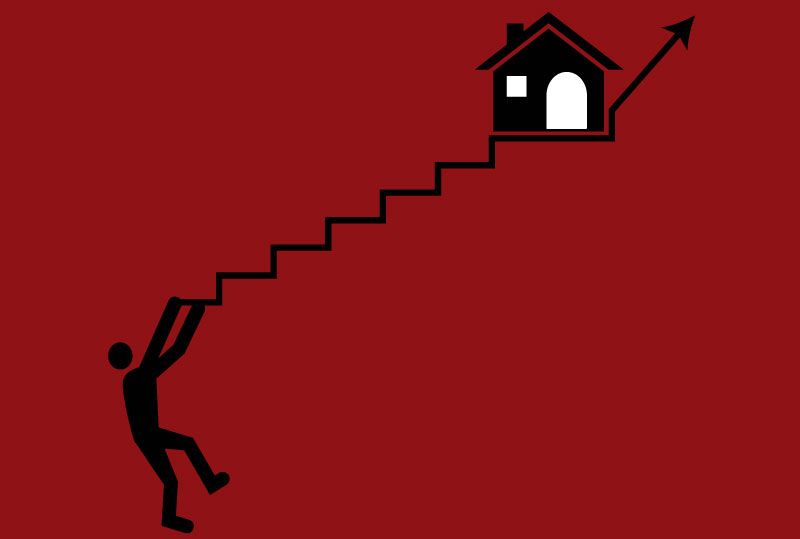The Challenges With Homeownership – Achieving the “American Dream”
As part of the “American Dream,” homeownership is often times at the top of the list. On the flip side, it could evolve into a source of stress and uncertainty, particularly for marginalized communities. In a media briefing on November 2, hosted by Ethnic Media Services, experts discussed three major risks to homeownership and highlighted strategies for addressing them.
Speakers

- Joe Jaramillo, Senior Attorney, Housing & Economic Rights Advocates (HERA)
- Rebecca Franklin, President, California Housing Finance Agency (CalHFA)
- Johanna Torres, Program Coordinator, California Rural Legal Assistance (CRLA)
- Saul de la Cruz, CRLA client
- Mary Day, Staff Attorney, HERA
- Danny Bishop, HERA client
The briefing kicked off with concerns around interest rates. The high interest rates associated with these loans can be a significant burden for homeowners, particularly those who are already struggling to make ends meet. With interest rates of 9% or more, these loans can quickly become unaffordable, especially if the borrower falls behind on payments or faces unexpected financial challenges. In addition, many of these loans include prepayment penalties, which can deter borrowers from paying off the loan early and can further increase the overall cost of the loan.
As Jaramillo notes, these loans were marketed heavily to vulnerable communities before the housing crash, and many borrowers were not fully aware of the risks and consequences involved. To address this issue, it is important for homeowners to work with housing counselors or attorneys to fully understand the terms of any loan they are considering and to explore other options for financing home improvements or other expenses.
When a parent or grandparent passes away, keeping the family home is one of the major risks. In families of color, who may have faced adversity throughout history, may not have access to the same resources and support networks as other families. As Rebecca Franklin, a housing counselor with the Housing and Economic Rights Advocates, explained, “We want to be able to get you educated on your situation and there may be other options for you to pursue.”
One potential solution is to work with a housing counselor or attorney to create a plan for passing the home down to the next generation. This can involve setting up a trust or other legal arrangement that ensures the home stays in the family and is not lost to foreclosure or other financial challenges. As Johanna Torres, an attorney with the California Rural Legal Assistance Foundation, noted, “We work with families to make sure that they have a plan in place, that they have the right documents, and that they’re able to pass on the home to the next generation.”
Another risk discussed was the potential dangers of PACE (Property Assessed Clean Energy) financing for energy-efficient home improvements. PACE can be a helpful tool for homeowners to save money on energy bills and reduce their carbon footprint, it can lead confusion and financial strain. As Joseph Jaramillo, an attorney with the National Consumer Law Center, explained, “There are laws, like the real estate settlement procedures act that require most mortgage services to provide periodic statements and information.”
One challenge with PACE is that it is often marketed aggressively to homeowners, who may not fully understand the terms and risks involved. This can lead to situations where homeowners take on debt they cannot afford or are not aware of the potential consequences if they fall behind on payments. To address this, Jaramillo suggested that homeowners work with a housing counselor or attorney to fully understand the terms of any PACE financing they are considering and to explore other options for financing energy-efficient upgrades.
The final risk discussed was the threat of zombie second mortgages, which can be a major source of stress and uncertainty for homeowners. Zombie second mortgages are loans that were taken out on a property but were never fully paid off or released, leaving the homeowner with unexpected bills and the threat of foreclosure. As Jaramillo noted, “After years of lying dormant, these second mortgages can come back to haunt borrowers and create significant financial challenges.”
To address this risk, Jaramillo suggested that homeowners work with a housing counselor or attorney to review their mortgage documents and ensure that all liens and encumbrances on the property have been released. This can involve working with the original lender or servicer to obtain a release of the lien or pursuing legal action if necessary.
Throughout the briefing, experts emphasized the importance of seeking out resources and support. “There are many resources out there,” Franklin said, “and we want to make sure that people know about them and are able to access them.” From housing counseling to legal aid organizations to government programs, America offers many way for homeowners to cover their backs.
As good as the resources are, nothing will compare to the support of the community, with community engagement and advocacy Torres calls for action, telling us we need to advocate, “for policies and programs that support homeownership and protect vulnerable communities.” Working with local organizations and elected officials is a great way to start. We can then promote policies supporting affordable housing, fair lending practices, and initiatives alike.
Overall, the media briefing highlighted the challenges and risks facing homeowners, particularly in communities of color and among vulnerable populations. The experts put a strong emphasis on the value the resources and support available to those in the community truly have. Working together with our elected officials we can put forth more initiatives supporting homeownership and financial security. After all, Americans have a dream to fulfill.


